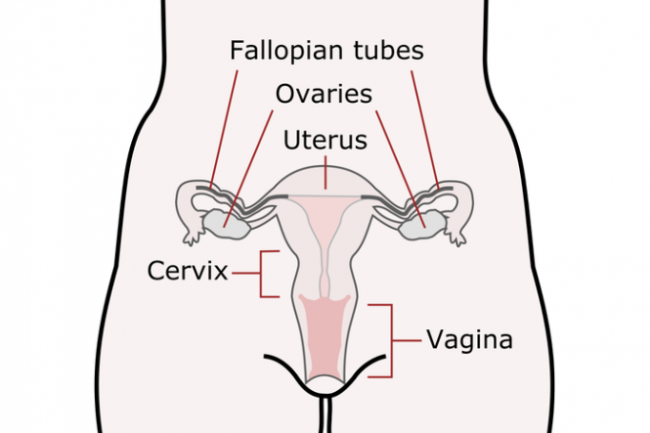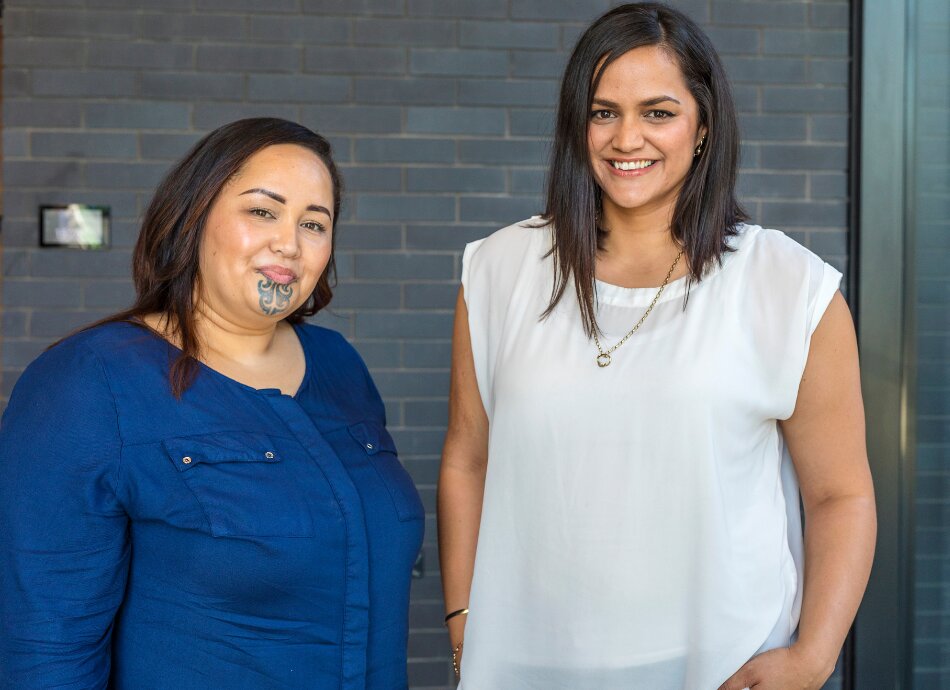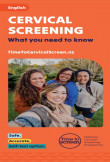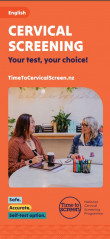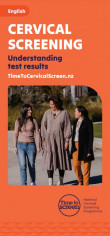There are now 3 ways your test can be done:
- You may be able to do your own vaginal swab in private at your healthcare provider’s clinic/surgery or in an approved community setting. They will send the swab off for you to be tested for HPV.
- Your healthcare provider can do the vaginal swab for you during an appointment.
- You can have a healthcare provider take a sample from your cervix as before (smear test). If the sample tests positive for HPV a cytology (cell) test can then be done without you needing to go in for another test.
Vaginal swab
A vaginal swab is taken in a similar way to swabs taken for sexually transmitted infections (STIs). The vaginal swab is similar to a cotton bud, which needs to be inserted into your vagina and rotated a few times before going into a tube and being sent to the lab. Many women find the self-test much easier than a smear test.
Here's a factsheet describing how to do the HPV self-test in English(external link) and here's a te reo Māori version(external link).
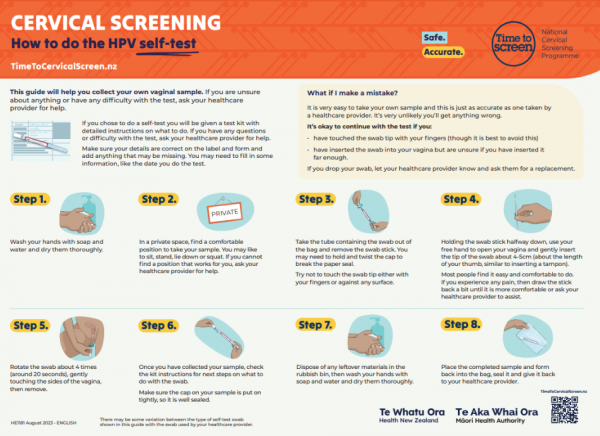
Image credit: Time to Screen National Cervical Screening Programme, NZ
Cervical sample
The following information still applies if you decide to have a cervical sample taken.
Having the sample of cells taken is very quick. Some people find it a little uncomfortable, but it shouldn’t hurt. If you’ve got your period, you can still have the test, provided bleeding isn’t too heavy. If it's heavy it could affect the test result..
Here’s how it usually works:
- The health professional doing the test will discuss what will happen with you – make sure they have explained it clearly.
- You can lie on your side or your back (whichever is more comfortable) with your knees bent up. Let the smear taker know what works best for you.
- It’s up to you how modest you want to be – cover up with the sheet provided if it feels better.
- They will open your vagina gently with a plastic or metal speculum.
- They will then use a small, soft brush to take a small sample of cells from the surface of your cervix.
- Once that's done, you can get dressed.
- They will tell you how you will get your results.
- Your test sample is sent to a laboratory and tested for HPV. If HPV is detected, the laboratory will examine the cells under a microscope.
- Your results will be sent to your health clinic after a couple of weeks.
- Further tests or treatment will be arranged if your results show that you need it.
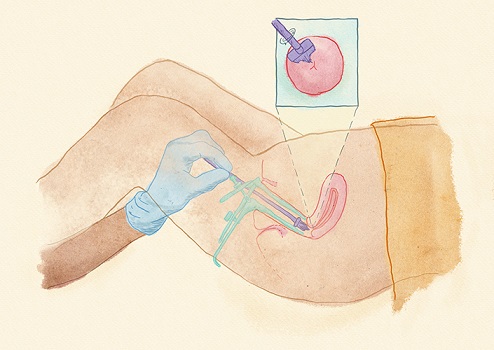
Image credit: Health Promotion Agency and Ministry of Health, NZ
Tips to help make things easier
Having a cervical smear can feel a bit awkward. Everyone has their own way of making it work. You may find the following tips help make your experience more comfortable:
- Wear a skirt you can leave on.
- Use the sheet or blanket provided to keep yourself covered and comfortable.
- Ask for a female smear taker.
- Ask whether someone from your culture can carry out the test for you.
- Try to breathe deeply and relax your legs.
- Try lying on your side.
- Take a friend or whānau member for support.
- Get your test done with a friend.
